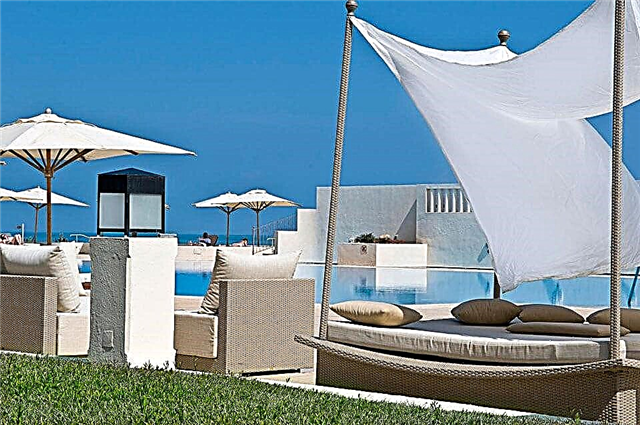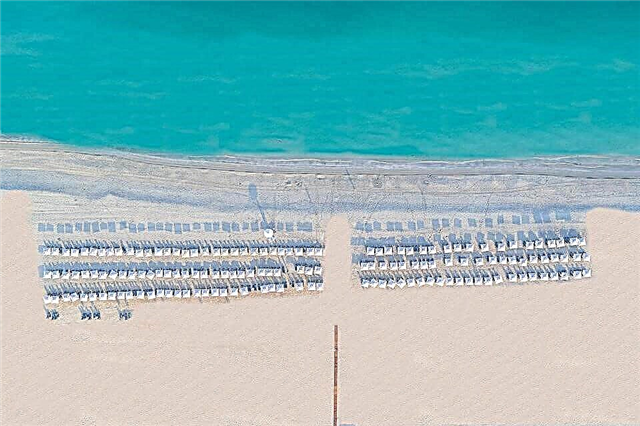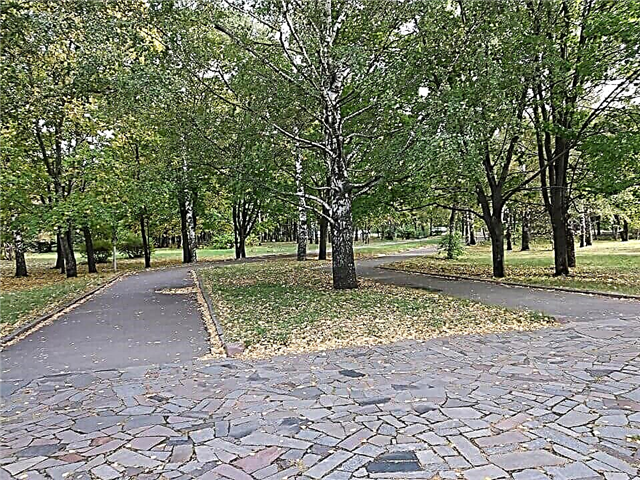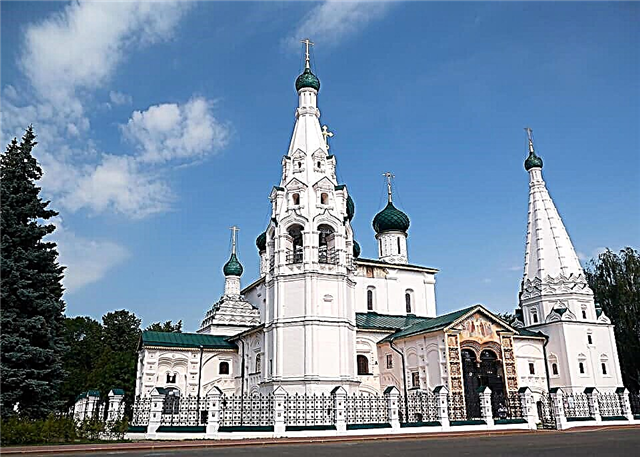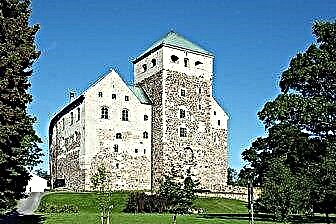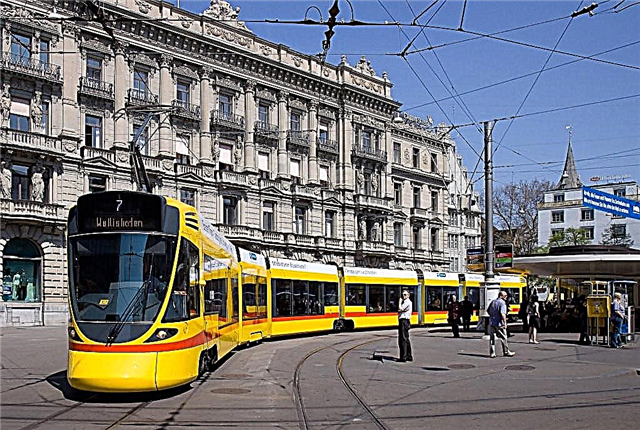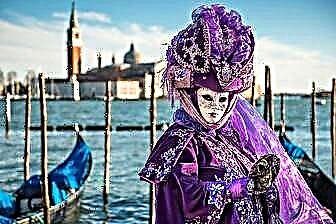Sung in the works of great poets, refined Venice is a city of graceful contrasts and illusions. Behind the magnificent facades of the Doge's Palace and Piazza San Marco hide shabby, damp neighborhoods, and the sparkling masks of the vibrant Venetian carnival hide the gloomy and sometimes difficult everyday reality of the locals.
And yet Venice is grand, no matter what stories are written about this city. Even if it has been going under water for decades, dexterous gondoliers will still ride tourists along narrow canals for many years to come. And as before - in the sultry summer months, the main palazzo of Venice will not be crowded by tourists from all over the world just to touch the beautiful history of the most magical city in Europe.

The best hotels and hotels at affordable prices.
from 700 rubles / day
What to see and where to go in Venice?
The most interesting and beautiful places for walking. Photos and a short description.
Grand canal
The main water avenue of Venice is 4 km long, passing through the whole city. Starts right at the Santa Lucia railway station. There are many pleasure boats running here, from where you can see the city in all its glory. Also, a lot of people walk along the public transport channel. The most beautiful palazzo, old churches, picturesque mansions are located along the banks. Each year, a historic regatta is held on the Grand Canal.

Saint Mark's Square
The central Venetian square, the most important city landmark and the pride of the Venetians. The square has long become a symbol of the city, its embodiment. Here are the main places in Venice, all cultural events take place, and the cobblestone pavement is trampled by the shoes of several million tourists every year. On the square there are two columns with statues of a winged lion and the apostle Mark.

St. Mark's Cathedral
A cult temple in the classic Byzantine style (very uncharacteristic for Western Europe), adorning St. Mark's Square. Until the beginning of the 19th century, the cathedral served as a royal chapel, where the rulers-doges were crowned. The relics of the Apostle Mark are kept here, which in the X century were brought to Venice after the next Crusade. The construction of the cathedral began in the 11th century, but the work was completed only by the end of the 15th century.

Clock Tower of Saint Mark
A structure built in the 15th century by the architect M. Koducci. The tower was designed in such a way that the astronomical dial could be seen from the side of the Adriatic Sea. Thus, all guests of the city, stepping on the embankment, could immediately feel the power and wealth of the Venetian Republic. The tower is decorated with a sculpture of a winged lion, which is a recognizable symbol of Venice.

Campanile of St. Mark's Cathedral
A hundred-meter bell tower from the 16th century, which previously served as a beacon for arriving ships. In the Middle Ages, there was a torture chamber inside. There are five bells on the bell area, each of which has its own purpose. At the beginning of the 20th century, as a result of an earthquake, the bell tower collapsed, but in 1912 it was restored again. The restorers managed to return the tower to its original appearance.

Doge's palace
An elegant palazzo, where the Doges lived for centuries - the rulers of the independent, wealthy and influential Venetian Republic. The palace was built, completed and decorated for over 100 years, trying to give it sufficient grandeur and luxury. That is why the architectural ensemble is a mixture of styles. Here and late European Gothic, and Byzantine classicism, and elements of the Moorish manner. Nowadays, the building houses a museum.

Scuolla San Rocco
The building, which belongs to the Brotherhood of San Rocco, was built in 1477. On the square of the same name, a charitable organization has built a Renaissance-style palace. Nowadays, in the scuolla, you can see an art gallery, a rich painting of the ceiling and walls. The entire interior of the palace is related to biblical stories and Christian relics.

Bridge of Sighs
An ancient bridge in the form of an arch, thrown over the Palace Canal. It connects the doge's royal palazzo with a prison. The architecture of the bridge is distinguished by elegance and romance. This is a popular dating place. According to one of the Venetian beliefs, it is believed that in a couple who kiss in this place, mutual love will never fade away. True, the increased attention of tourists to this attraction can ruin all the romance of the moment.

Rialto bridge
The bridge over the Grand Canal in the Rialto quarter. All pleasure boats pass by him so that tourists can take photographs as a souvenir. The ferry in this place has existed since the XII century. At first it was a floating bridge, then a wooden one, in the 16th century. he became stone. The structure collapsed several times with enviable regularity. The building of 1591 has survived to this day, which turned out to be stronger than its predecessors.

Academy Bridge
South Venetian bridge over the Grand Canal. The structure connects the San Marco area with the galleries of the art academy. The modern version of the bridge was erected in 1934. It was designed by the architect Miozzi. Many times they wanted to replace the wooden structure of the building with a metal one, but the authorities did not allow the replacement.

Cathedral of Santa Maria Gloriosa dei Frari
Franciscan Gothic Church of the XIII-XIV centuries, dedicated to the Holy Virgin Mary. Several styles were used during construction: Byzantine, Venetian and Gothic. The best masters of that time were invited to paint the walls and decorate the interior interiors. For example, in the temple there is a sculpture of John the Baptist by the famous Donatello and the painting "Madonna of Pesaro" by the immortal Titian.

Cathedral of Santa Maria della Salute
The church appeared as a gratitude to the Almighty for ridding Venice of the terrible plague epidemic in the 17th century. The disease claimed tens of thousands of lives (more than a third of the city's population in those centuries). The construction of the cathedral lasted 50 years, for its stability, countless wooden beams were driven into its base. The temple is located opposite the Doge's Palace on the main city square of St. Mark.

Cathedral of San Giorgio Maggiore
The church is located on the island of the same name. It was built in the 16th century in the classic Renaissance style. Since the 10th century, the island has been the property of the monastic order of St. Benedict. Before the earthquake at the beginning of the 13th century, there was a monastery and an old temple here, which were destroyed as a result of the elements. The new church appeared at the beginning of the 16th century. The inner walls depict Tintoretto's Manna from Heaven and The Last Supper.

Cathedral of Santi Giovanni e Paolo
Located on the square of the same name, built in 1430. The cathedral is dedicated to St. John and Paul. It is in this place that 18 doges of the Venetian Republic rest. The interior of the temple is decorated with numerous works of art. The facade is made in the Gothic style. A distinctive feature of the cathedral is that there is no bell tower in the temple tower.

Church of San Pantalon
It is located in St. Panteleimon Square. The church was rebuilt in its present form in 1668. The ceiling painting of the temple contains 40 biblical scenes woven together by Giovanni Fumiani. The ceiling painting in the church has no borders or framing. This creates the illusion that the walls and ceiling are one. A Christian relic is kept in the church chapel: the nail of the True Cross.

Ca-d'Oro palace
The official name of the building is Palazzo St. Sophia. The building was built in the 15th century. Architects Bartolomeo and Giovanni Bona commissioned by one of the most powerful Venetian families.For the exterior decoration, gold leaf was used, but it has not survived to this day. At the end of the 19th century, the mansion was acquired by Baron Giorgio Frenchetti. The aristocrat collected a large collection of paintings, which, together with the house, went to the state after his death.

Ca 'Rezzonico Palace
Museum in a luxurious 17th century palazzo, where the works of Longhi, Piazzetto, Tintoretto, Guardi are exhibited. In addition to painting, the museum also features sculptures, pieces of furniture and clothing. The interiors of the palace demonstrate the desire for lush luxury, characteristic of the Venetian aristocrats in the 17th and 18th centuries. The palazzo belonged to the Rezzonico family, from where Pope Clement XIII emerged.

Palazzo Cantarini del Bovolo
The palace in San Marco was built in 1499. The highlight of the attraction is the spiral staircase leading to the balconies, which offer panoramic views of the city. For a long time, the Venetian palace was owned by Pietro Contarini. Today tourist groups are allowed to visit the palace.

Fondaco dei Tedeschi
A huge Venetian palace is located at the Grand Canal. The spacious and sunny courtyard was needed by German merchants who carried their goods through it into the house. In our time, the courtyard of the palace was covered with a roof. Now there are shops, cafes and souvenir shops. The galleries of the Fondaco Palace offer amazing views of Venice.
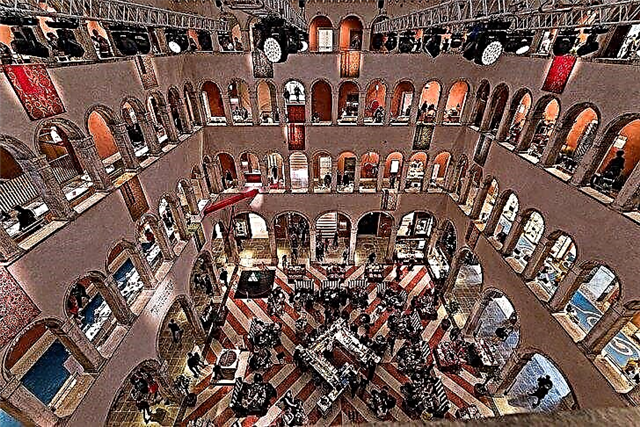
Teatro La Fenice
One of the main musical theaters in Venice. The building was completed by 1982. It was here in 1813 that Gioachino Rossini made his debut, whose operas are now staged in all theaters of the world. The theater burned several times, but each time it was rebuilt in an even more magnificent form, for which it got its name (“la fenice” means “phoenix”). The last fire happened in 1996, after which the stage was opened to viewers only in 2003.

Correr Municipal Museum
A museum named after collector Teodoro Correr, a representative of an aristocratic Venetian family. This patron bequeathed his entire collection to the city along with the palace where this collection was located. Gradually, the funds of the museum grew, new works of art were acquired, some of the exhibits were donated by private individuals. This is how the Foundation for the City Museums of Venice was gradually formed.

Academy Gallery
The museum was founded at the end of the 18th century. At first, it housed a school of painting and sculpture, and then exhibitions began to appear. Among the exhibits are paintings by Veneziano, Canaletto and Titian. In the XIX-XX centuries. the collection was rather modest, but thanks to donations from patrons, the number of exhibition halls increased to 24. There are always long queues at the entrance to the museum, so you have to wait to get inside.

Peggy Guggenheim Collection
Museum of Modern Art, founded by the niece of the famous collector Solomon Guggenheim (his galleries are open all over the world). Works by Kandinsky, Picasso, Klee, Dali and Miro are exhibited here. Temporary exhibitions are periodically held on the territory of the museum. The collection is housed in an unfinished palazzo. The exhibition is based on paintings from the personal collection of Peggy Guggenheim.

Punta della Dogana
The art gallery of the city is located in the old customs building. The building was built in the city in 1678. Recently, a contemporary art exhibition was opened in a local gallery. Provocative works attract the attention of visitors literally from the doorway. There is also a maritime exhibition in the building, where you can see the fragments of ships and everything that was raised from the seabed.

Murano island
An archipelago of small five islands, which has been producing Venetian glass products for hundreds of years. From here, glassmaking spread throughout Venice. On the island, you can watch the process of creating masterpieces or visit one of the many shops offering products by local craftsmen for all tastes. Murano glass is a well-known global brand, highly appreciated outside of Italy.

Burano island
A small island near Murano, where one of the city's quarters of Venice is located. The place is interesting because there are picturesque multi-colored houses of unusually bright colors. Local legend says that it was the wives of local drunks who painted the walls so that drunken husbands would not confuse their house with that of a neighbor. Interestingly, a certain color is officially assigned to each building.

Venetian ghetto
Cannaregio area surrounded by canals. It was nicknamed the ghetto due to the fact that once exclusively Jews lived there. In 1516 they were expelled from the city, they were settled on this island. Jews in Venice were forbidden to hold public office, they could not master a number of professions, entered the city only with permission from the protection of the island. To somehow accommodate the growing population of the ghetto, the Jewish community had to build eight-story buildings.

Arsenal
Armory and shipyard in the historic part of Venice. The Arsenal was founded at the beginning of the 12th century. for the purpose of equipping combat galleys. Here the galleon was invented - a battleship, a real floating fortress, which was used in many future naval battles. Now the Arsenal building houses a research center and an exhibition hall, where you can trace the history of the development of shipbuilding at the Venetian shipyards.

Rialto Market
The market in the historic quarter of the city has existed for over 1000 years. Venice began its existence with the Rialto. On small islands near the Grand Canal, there are market stalls with vegetables and fruits. There are also fish shops that are obligatory for these places. The modern building with a shopping arcade was erected in 1907. Adjacent to the market is the adjacent courthouse, where the carabinieri regularly deliver handcuffed prisoners. The market itself is open from Tuesday to Saturday from 7.30 am to lunchtime.

Libreria Acqua Alta
The famous bookstore is located at the Grand Canal. It does not have the usual book shelves. All publications are stacked on the floor. When there is a threat of flooding for the old building where the store operates, the owner shifts the books to bathtubs, basins and even boats. From 9 am the store sells both rare editions and popular literature in Italian. At the entrance, visitors are greeted by the owner's cat, and behind the cashier is Luigi himself, the founder of this place.

Florian Cafe
An iconic Venetian coffee house that has been operating since the 18th century. The cafe has several rooms and even has its own orchestra. All famous people who have come to Venice for the last 150 years have definitely noted their presence in this place. Floriana offers signature desserts, cocktails and coffee. There are bikes about the prices in the institution among tourists, since they are quite high, as in any other similar place.

The beaches of the island of Lido
The satellite island of Venice is a resort with breathtaking beaches. Ferries and boats carrying tourists run from the city's pier to the island around the clock. Lido beaches are divided into paid and free. Paid areas can only be used by guests of local hotels. The beach area consists of sandy and pebble sections. All beaches are equipped with the necessary infrastructure.

Gondola - the symbol of Venice
The very first thing that comes to mind when mentioning Venice is the gondola and its helmsman: a cheerful, quick-witted and a bit goofy gondolier. Walking along the Venetian canals is the most popular pastime for tourists. But few people know that some boats are more expensive than the most expensive cars, and to obtain a gondolier license, an applicant needs to study for a long time and pass a difficult exam.

Venice Film Festival
A well-known international event in the world of cinema, which brings together world stars and representatives of the elite.Here, author's films, documentaries and short films are submitted to the jury. The main prize is the Golden Lion. Having received the coveted statuette, the director can count on the most lucrative contracts and interesting projects. Many film fans from all over the world strive to get to the Venice Festival.

Venice Carnival
A festive extravaganza before the onset of Great Lent, tradition going back to the distant past. During Carnival, the streets are filled with people wearing luxurious costumes and masks, many of which are works of art. The palazzo hosts balls, Renaissance and Baroque dinners. This is a magical time when the whole city is sent to the glorious past for ten whole days.


